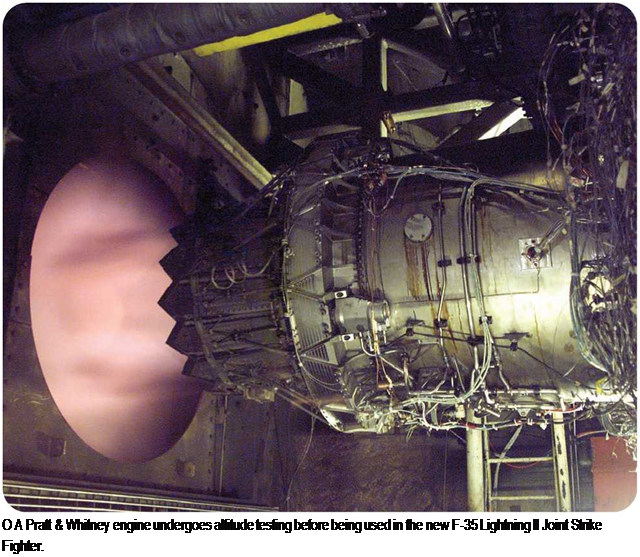Turbine Engines
The turbojet is the simplest jet engine. Air entering the engine is compressed by spinning fans in what is called a compressor. The compressed air flows into the engine’s combustion chamber. Here, fuel is sprayed into the air and burned.
 |
The hot gas produced by the burning expands and forces its way out through the back of the engine. On its way out, the jet of hot gas rushes through another set of fans, called a turbine, and makes them spin. The spinning turbine drives the compressor at the front of the engine. Turbojets are best suited to aircraft flying at about twice the speed of sound. They are also very noisy, so turbojets are not used much today.
Most of the jet engines that power airliners and military aircraft today are turbofans. A turbofan engine has a fan at the front. The fans at the front of the engines that power the biggest airliners are enormous. The fan works like a propeller with lots of blades. It is powered by a turbine inside the engine. Only a small fraction of the air that goes through the fan enters the engine. Most of the air from the fan is blown around the outside of the engine. This big mass of air moving slowly around the engine
provides most of the engine’s thrust. It also enables turbofans to be quieter than turbojets. Turbofans work best in aircraft flying at 250-1,300 miles per hour (402-2,092 kilometers per hour).
Turbine engines also power some slower planes with propellers. A turbine engine with a propeller is called a turboprop. A turbine inside the engine powers the propeller. Turboprops work best for aircraft flying at up to about 450 miles per hour (724 kilometers per hour).
All but the smallest helicopters are now powered by turbine engines. These engines are called turboshafts. A turboshaft engine uses the jet of gas from the engine to spin a shaft. The spinning shaft drives the helicopter’s rotors.










